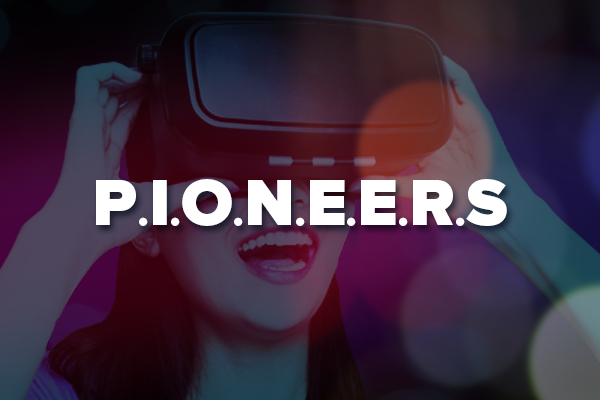
For a rundown of the biggest developments in Virtual Reality and Augmented Reality from the past 12 months, check out our 2016 roundup, Augmented Reality and Virtual Reality – The Year In Review. Or take a look ahead with our the 5 top Virtual Reality and Augmented Reality technology trends for 2017. And for more information on how retailers are using mixed commerce solutions, check out our Mixed Commerce Glossary, which defines the terminology being used by businesses to describe the changes currently sweeping retail.
When it comes to emerging technologies, even PIONEERS need a framework for success
Every day we connect with enterprise businesses across industry verticals that are looking for ways to use Augmented Reality and Virtual Reality to inspire customer engagement, reduce costs and amplify sales. Lowe’s Home Improvement has been an early leader in this space thanks to the Lowe’s Holoroom, a Virtual Reality Showroom experience that helps customers better plan home improvement projects. Through this and the hundreds of other projects that we’ve done over our 5 years in the industry, we’ve crafted a recipe for running an AR or VR proof of concept. The PIONEERS framework takes a project from curiosity, conception and iteration through to shifting a proven concept to the enterprise. Here are the details:
Augmented Reality and Virtual Reality Project Case Study
3D Cloud has developed a framework that can help guide ambitious companies like Lowe’s as they shepherd their first AR or VR project through the many pitfalls of development. Use the PIONEERS framework as a guide as you take the plunge into working with these ripe but emerging technologies.
So what is the PIONEERS framework? It is as follows:
- P — Prepare. Learn the landscape, get buy-in from stakeholders.
- I — Imagine the full, long-term project. Think 24-36 months out.
- O — Offer a demo. Start with simple AR and explore use cases from there.
- N — Narrow down use cases.
- E — Establish what success looks like to the customer.
- E — Embrace the customer journey.
- R — Ready to test use cases in an “innovation labs” format.
- S — Shift from development to implementation.
Prepare
You’ve got a great idea, but how do you take it from concept to reality? When it comes to exploring use cases for emerging technologies, it is vital that you generate support from internal stakeholders as early in the process as is possible. How do you get your coworkers to fall in love with your idea? Objectives may differ, some team members may be technophobes and haters, or may reasonably be concerned with cost and logistics — no matter the concern, it’s important to address it early to avoid a key player vetoing the idea further down the line. The key is investing the time to help everyone involved in the decision to understand the intrinsic value of the idea, and how it will pay off for the organization in the long run.
Imagine
Remember the Enterprise communicating with the Klingons via video chat on “Star Trek”? Video calling was a staple of science fiction for decades. Now, 50 years after the original Captain Kirk had his heyday, millions of people are using Skype, Facetime or similar services to make video calls every day. If you’re looking to do something innovative and that’s maybe never been done before in your industry, it is going to be difficult to deliver value quickly per a typical ROI calculation. Companies tend to think in fiscal quarters of 3 to 6 month increments, but you’ll need to broaden your horizons and break out of short term ROI thinking. It’s not easy — it takes vision, leadership and determination. Remember to be realistic. People who are innovative are often said to have their head in the clouds, but they are actually just working on a longer time horizon than the average person. When you can picture the world 3 to 5 years out, you will see the true future and be able to talk about your vision in ways that compliment short term thinking instead of conflicting with it.
Open with a demo
When you first approach your team with an idea for an AR or VR project it’s important to make sure your audience knows what you are talking about. Despite being buzzed about for years, most people have never seen the inside of a VR helmet or messed around with an AR app. Many products currently on the market can provide a little bit of that “wow factor” that will get your co-workers thinking about ways the organization can harness this new technology. Seeing is believing, and you’ll generate more buy-in when you open the conversation with stakeholders by showing a real demo, allowing people to interact with they type of product you’re proposing.
Narrow down use cases
Once the demo is complete, your team will be inspired to come up with all kinds of applications for AR and VR technology. Brainstorming is great, and you should encourage everyone to throw in their own ideas. Once you’ve generated a healthy list of proposed AR and VR applications your group is interested in, it’s time to narrow your options. Do you want to go AR or VR? If VR, which platform are you interested in developing for? How much will these ideas cost? What is actually possible at this point in time? Working your way through questions like these will help your team arrive at a proposed product that’s feasible and cost-effective.
Establish what success looks like and how you’ll measure it
Every project needs an attainable goal, but setting that goal can trip up even the most collaborative teams. Define success early in the process, and then stick with that definition until the project is complete. It sounds easy, right? It’s not, especially when designing for new technologies that are themselves constantly changing, growing and improving. The fact is that no product is ever “complete” when it is shipped. It’s simply the best product the company could produce in the time they had available. And hey, all those awesome features you couldn’t add in time? That’s what version 2.0 is for!
Embrace the customer journey
In all this talk of technology platforms and development processes, it’s easy to lose sight of the customer and their needs. After all, the best technology in the world is useless if it fails to make the buying process easier and more enjoyable. For example, cool tech can be a magnet, but there can also be resistance. Lowe’s looked specifically at this problem and invested in looking at how to present the technology to make it more accessible to people whole could genuinely be helped by it. The Holoroom was developed with this in mind, and eases the customer into the process by front-loading meetings with design professionals that talk the buyer through each step. When it’s finally time to put on the VR headset and check out their kitchen, it’s just a natural part of the buying process, not an unwanted intrusion by technology.
Ready your organization through training, internal education and marketing
The development process most likely involved a small team, but you’re going to have to bring a lot more people into the fold once your project moves past the design phase and enters testing. Embrace this challenge, and make producing great internal education and marketing materials a key part of the development cycle. Remember, if you can’t explain to your co-workers how your fancy new innovation works, what hope are you going to have with the general public? It’s vital that you spend time working out exactly how you want your product to work, and how you want to explain it to the rest of the world, which will give it a much better shot at succeeding in the marketplace.
Shift from innovation labs thinking to enterprise thinking
You did it! You have developed a new AR or VR application. It’s been tested. It works. It’s now being implemented. Time to sit back, rest a little bit on those laurels, and pat each other on the back, right? Not even close. As with most things, the end of the process is actually a new beginning, and you will now have to plan for how to manage the move beyond development to scale service, support, marketing, training and deployment to the enterprise.
We’ll get back to you with an acronym for that.










